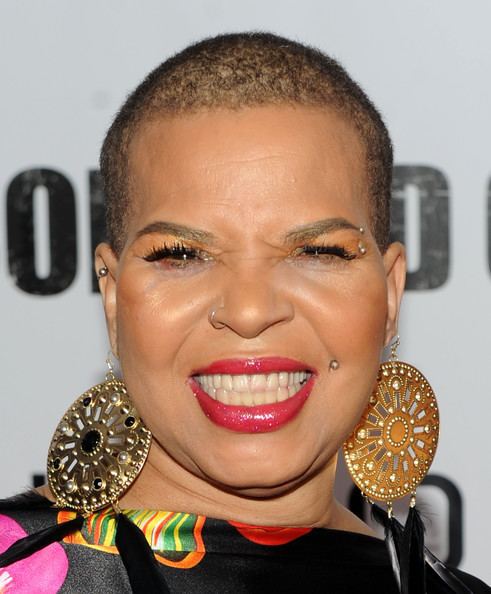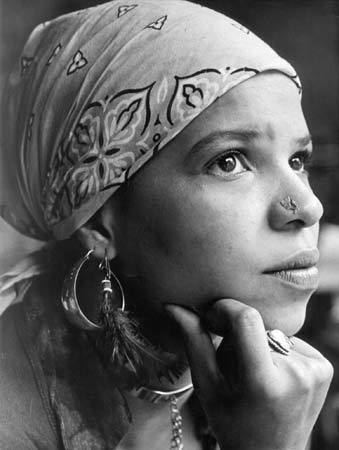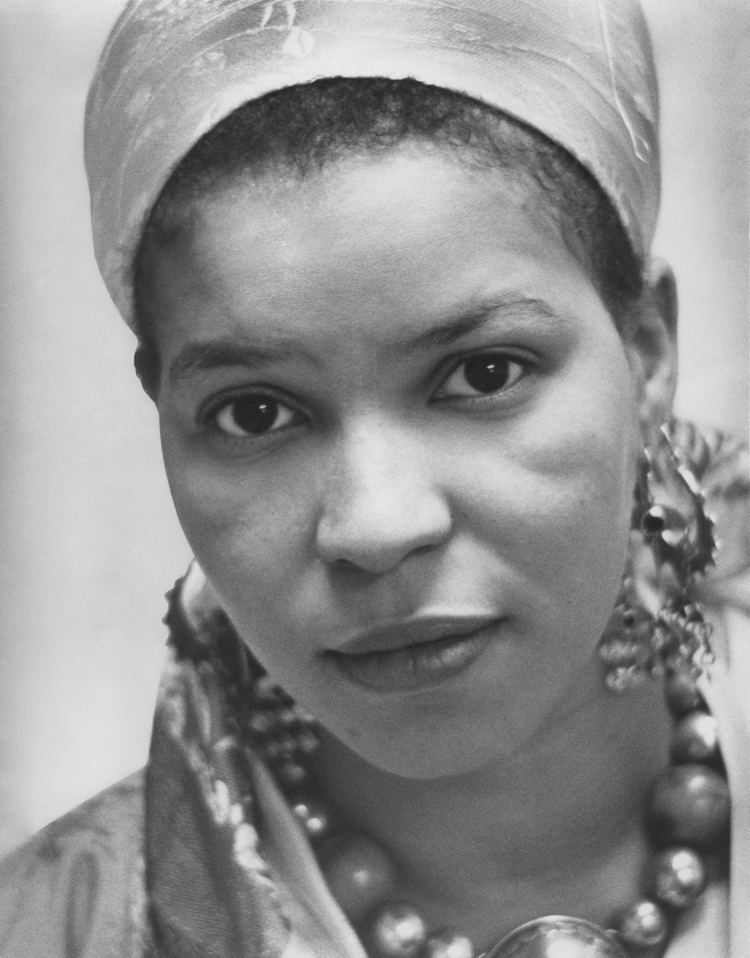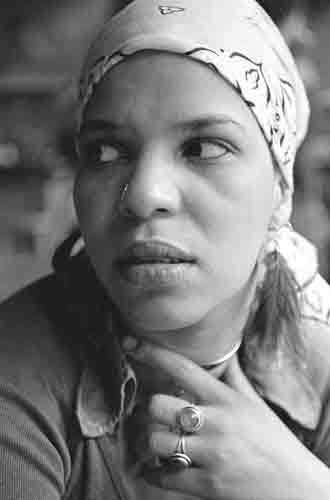Name Ntozake Shange Nationality American Role Playwright | Occupation Playwright, Author Siblings Ifa Bayeza | |
 | ||
Full Name Paulette L. Williams Alma mater Barnard CollegeUniversity of Southern California Known for for colored girls who have considered suicide / when the rainbow is enuf Movies For Colored Girls, Whitewash, An Evening with Diana Ross (The Big Event) Parents Eloise Williams, Paul T. Williams Books Sassafrass - Cypress & Indigo, Ellington was not a street, Some Sing - Some Cry: A Novel, Betsey Brown, Liliane Similar People Kadir Nelson, Tyler Perry, Phylicia Rashad, Anika Noni Rose, Kimberly Elise | ||
Ntozake shange playwright poet performer education update
Ntozake Shange ( ; born October 18, 1948) is an American playwright, and poet. As a self-proclaimed black feminist, she addresses issues relating to race and feminism in much of her work.
Contents
- Ntozake shange playwright poet performer education update
- Harriette cole sit down interview with ntozake shange
- Early life
- Career
- Relationship to the Black Arts Movement
- Awards
- Nominations
- Plays
- Poetry
- Novels
- Childrens books
- Essays
- References

Shange is best known for the Obie Award-winning play for colored girls who have considered suicide / when the rainbow is enuf.

She has also written several novels including Sassafrass, Cypress & Indigo, Liliane, and Betsey Brown, a novel about an African-American girl who runs away from home. Among her honors and awards are fellowships from the Guggenheim Foundation and the Lila Wallace Reader's Digest Fund, and a Pushcart Prize. In April 2016, Barnard College announced that it acquired Shange's archive. Shange lives in Brooklyn, New York.

Harriette cole sit down interview with ntozake shange
Early life
Shange was born Paulette L. Williams in Trenton, New Jersey, to an upper-middle-class family. Her father, Paul T. Williams, was an Air Force surgeon, and her mother, Eloise Williams, was an educator and a psychiatric social worker. When she was aged eight, Shange's family moved to the racially segregated city of St. Louis. As a result of the Brown v. Board of Education court decision, Shange was bused to a white school where she endured racism and racist attacks.
Shange's family had a strong interest in the arts and encouraged her artistic education. Among the guests at their home were Dizzy Gillespie, Miles Davis, Chuck Berry, and W. E. B. Du Bois. From an early age, Shange took an interest in poetry. While growing up with her family in Trenton, Shange attended poetry readings with her younger sister Wanda (now known as the playwright Ifa Bayeza). These poetry readings fostered an early interest for Shange in the South in particular, and the loss it represented to young Black children who migrated to the North with their parents. In 1956, Shange's family moved to St. Louis, Missouri where Shange was sent several miles away from home to a non-segregated school that allowed her to receive "gifted" education. While attending this non-segregated school, Shange faced overt racism and harassment. These experiences would later go on to heavily influence her work.
When Shange was 13, she returned to New Jersey, where she graduated from Lawrence High School. In 1966 Shange enrolled at Barnard College in New York City. During her time at Barnard, Shange met fellow Barnard student and would-be poet Thulani Davis. The two poets would later go on to collaborate on various works. Shange graduated cum laude in American Studies, then earned a master's degree in the same field from the University of Southern California in Los Angeles. However, her college years were not all pleasant. She married during her first year in college, but the marriage did not last long. Depressed over her separation and with a strong sense of bitterness and alienation, she attempted suicide. In 1971, having come to terms with her depression and alienation, Shange changed her name. In Xhosa, Ntozake means "she who has her own things" (literally "things that belong to her") and Shange means "he/she who walks/lives with lions" (meaning "the lion's pride" in Zulu).
Career
In 1975, Shange moved back to New York City, after earning her Master's in American Studies in 1973 from the University of Southern California in Los Angeles, California. In that year her first and most well-known play was produced — for colored girls who have considered suicide / when the rainbow is enuf. First produced Off-Broadway, the play soon moved on to Broadway at the Booth Theater and won several awards, including the Obie Award, Outer Critics Circle Award, and the AUDELCO Award. This play, her most famous work, was a 20-part choreopoem that chronicled the lives of women of color in the United States. The poem was eventually made into the stage play, was then published in book form in 1977. In 2010, the choreopoem was adapted into a film (For Colored Girls, directed by Tyler Perry). Since then, Shange has written other successful plays, including Spell No. 7, a 1979 choreopoem that explores the Black experience and an adaptation of Bertolt Brecht's Mother Courage and Her Children (1980), which won an Obie Award.
In 1978, Shange became an associate of the Women's Institute for Freedom of the Press (WIFP). WIFP is an American nonprofit publishing organization. The organization works to increase communication between women and connect the public with forms of women-based media.
In 2003, Shange wrote and oversaw the production of Lavender Lizards and Lilac Landmines: Layla's Dream while serving as a visiting artist at the University of Florida, Gainesville.
Her individual poems, essays, and short stories have appeared in numerous magazines and anthologies, including The Black Scholar, Yardbird, Ms., Essence Magazine, The Chicago Tribune, VIBE, and Third-World Women.
Relationship to the Black Arts Movement
The Black Arts Movement—also known as BAM—is described as the "aesthetic and spiritual sister of the Black Power concept." The Black Arts Movement is a subset of the Black Power Movement. Larry Neal described the Black Arts Movement as a "radical reordering of the western cultural aesthetic." Key concepts of BAM were focused on a "separate symbolism, mythology, critique, and iconology" as well as the African American’s desire for "self-determination and nationhood." BAM consisted of actors, actresses, choreographers, musicians, novelists, poets, photographers and artists.
Though male artists such as Amiri Baraka heavily dominated the Black Arts Movement, some notable women writers of the movement were Gwendolyn Brooks, Nikki Giovanni, Rosa Guy, Lorraine Hansberry, Lucille Clifton, and Sonia Sanchez, among others. Although Shange is described as a "post-Black artist," her work was decidedly feminist whereas BAM has been criticized as misogynistic and "sexism had been widely and hotly debated within movement publications and organizations." Corresponding with the idea that art from BAM was a "radical reordering of the western cultural aesthetic," Shange herself has described her atypical writing style. In regards to her plays, she states: "A play has a form that has to be finished. A performance piece has an organic form, but it can even flow. And there doesn’t have to be some ultimate climax in it. And there does not have to be a denouement."
Though Shange's work did have a "radical reordering of western cultural aesthetic" with its spelling, structure, and style, Baraka—one of the leading male figures of the movement denied her as a post-Black artist. In regards to Shange as a part of the black aesthetic and as a post-Black artist, he claimed "that several women writers, among them Michelle Wallace [sic] and Ntozake Shange, like Reed, had their own 'Hollywood' aesthetic, one of 'capitulation' and 'garbage.'" In regards to a black aesthetic, Shange has described different styles of writing for different parts of the country. She states: "There’s not a California style, but there are certain feelings and a certain freeness that set those writers off from those in the Chicago-St. Louis-Detroit tripod group…so that the chauvinism that you might find that’s exclusionary, in that triangle, you don’t find too much in California." Shange sets her writing apart from the Black aesthetic of the Black arts movement by creating a "special aesthetic" for black women "to an extent." She claims, "the same rhetoric that is used to establish the Black Aesthetic, we must use to establish a women’s aesthetic, which is to say that those parts of reality that are ours, those things about our bodies, the cycles of our lives that have been ignored for centuries in all castes and classes of our people, are to be dealt with now."
